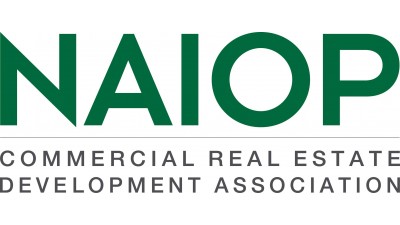Can PropTech Bring CRE Into The Future?

The wide-eyed, visionary world of PropTech is quickly adapting to the vast number of priorities in the commercial real estate industry. This is particularly important for property owners who wrestle with how to incorporate PropTech in a short-term-investment property.
“It can be hard to justify a huge hardware investment or structural change if the landlord has a short-term hold strategy,” JLL Spark Head of Growth Andrea Jang said. “An owner may only intend to hold onto an asset for two years, so offering short payback periods and strong ROI can be a huge advantage for PropTech.”
Many PropTech companies are pursuing what Jang calls a hardware-light model, focusing on analytical software and specialized services rather than physical improvements. This breed of solution is betting it can bring commercial real estate into the future step-by-step with digital changes, rather than by structural leaps and bounds.
JLL Spark has been assiduously following exactly these types of companies. Spark functions as an independent venture capital arm of JLL, investing in PropTech startups with a wide range of functions, from occupant experience apps like HqO to liability insurance providers like Jones.
Spark has funded a handful of solutions that streamline repetitive tasks. Jang said first-generation enterprise software technology created static databases that made collaboration between users impossible.
“Historically, analysts had to manually clean datasets and build dashboards before they could interpret the data,” Jang said. “Modern software platforms allow users to collaborate in real time, assign tasks, and not only centralize but also structure data to show users insights at the click of a button.”
Jang sees promise in Dealpath, a deal pipeline and deal management platform that has powered real estate investment firms to organize and control over $3 trillion in deal volume, as well as Honest Buildings, a project management platform that has facilitated over $16B in project volume for building owners and investors. These solutions free up precious hours that real estate professionals currently spend on tedious data management and form emails, allowing them to focus on more valuable work.

But the scope of PropTech extends far beyond real estate professionals. Creating a more engaging occupant experience is especially important as remote work becomes more widespread.
“The office has to be a compelling and interesting place to work, or else people are just going to work from home,” Jang said.
Jang said Spark has also made investments in apps that promise to give office and apartment tenants a more seamless, connected experience. She pointed to HqO and Livly, which are tenant experience platforms that bring together tenant services and allow landlords to offer deals and discounts on goods and services within or nearby their buildings, from dining to dry cleaning.
Some of these PropTech tools can boost a building’s operational efficiency by changing the way tenants use their space. VergeSense is an AI-powered platform that monitors room and desk utilization, allowing companies to optimize their office layouts. The sensors are battery-operated and can be installed in minutes, without any structural changes to a building.
Office owners in a handful of major U.S. cities work with BureauOne, a furniture leasing company, to turn vacant suites into ready-to-work office spaces within a matter of days. By moving tenants in more quickly, buildings can increase their rent rolls and also save on tenant improvement budgets.
In some respects, PropTech is branching off into two different arms: platforms that help the commercial real estate workforce and platforms that help consumers. But Jang said these two arms are complementary.
“You can’t have one without the other,” Jang said. “Owners and operators need to gather knowledge faster to make the right decisions, and you only obtain that knowledge quickly by having platforms for occupants.”
As to whether these PropTech improvements will actually help grow a future generation of “smart” buildings, Jang demurred.
“These improvements can certainly make buildings smarter in the short term,” she said. “Creating a 100% super-smart building from the ground up would be a longer-term endeavor.”
Jang will speak on a panel about new building technologies for asset and portfolio managers at NAIOP’s CRE.Converge event, Oct. 14 to Oct. 16 in Los Angeles.
This feature was produced in collaboration between Bisnow Branded Content and NAIOP. Bisnow news staff was not involved in the production of this content.

